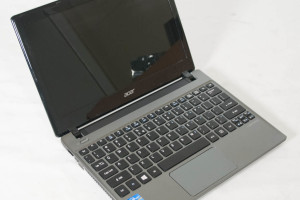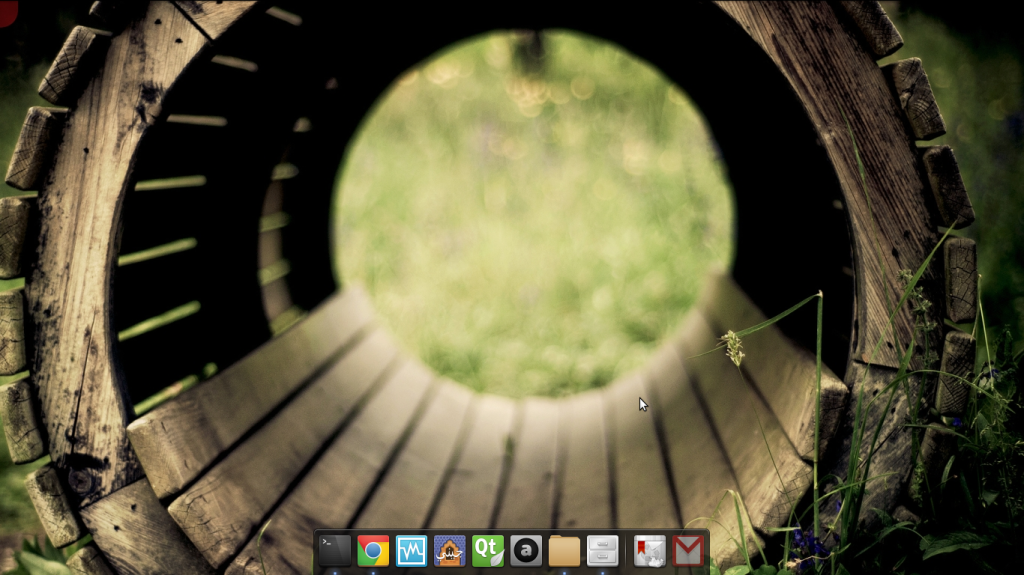So I got my tax refund the other day, and I promptly purchased two items: new shoes to replace my ripped-in-four-places boots, and a new laptop. It’s an 11.6″ Acer V5, which was on sale at FutureShop for $379.
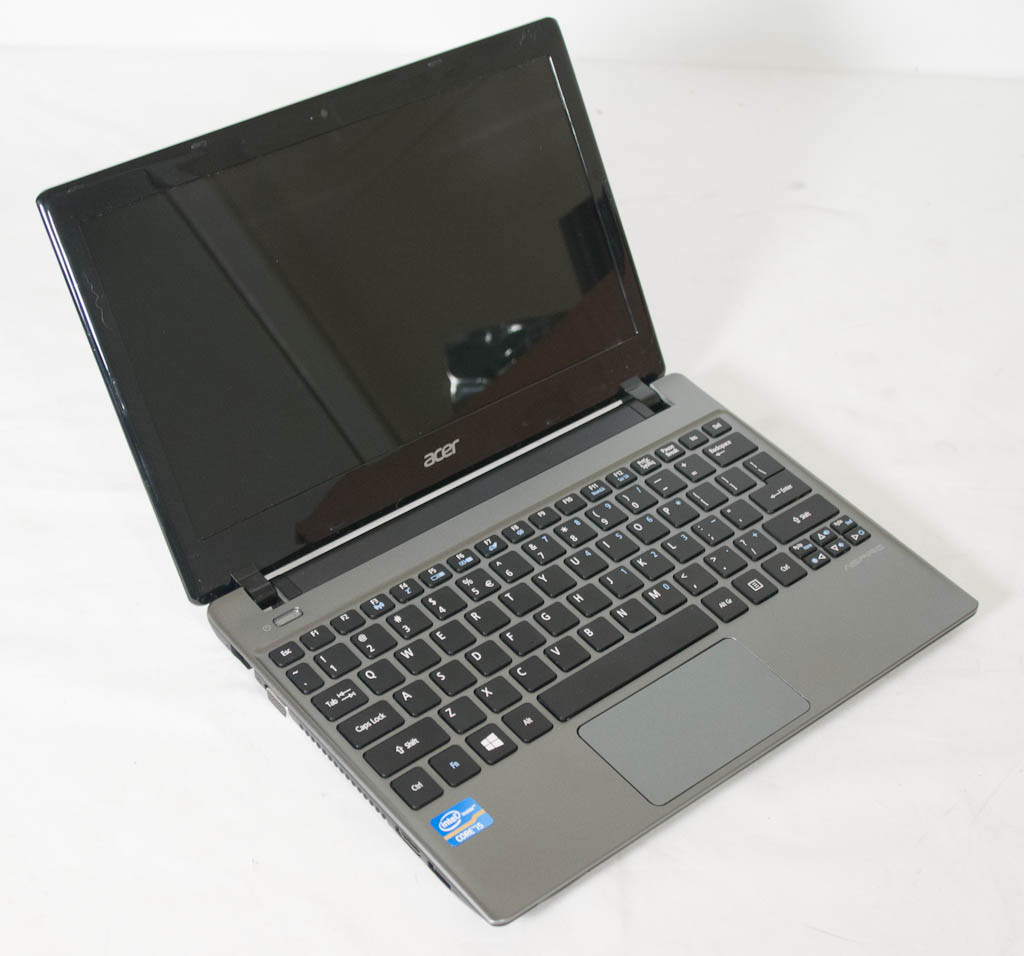 The laptop came installed with Windows 8 – more on that later. In any case, I replaced it with the latest version of the popular Linux distribution Xubuntu. To pretty it up, I installed the Cinnamon desktop environment and Docky. The end result is pretty and functional.
The laptop came installed with Windows 8 – more on that later. In any case, I replaced it with the latest version of the popular Linux distribution Xubuntu. To pretty it up, I installed the Cinnamon desktop environment and Docky. The end result is pretty and functional.
After installing Linux, everything worked out of the box. Bluetooth, wifi, sound – even my networked printer was detected. The only exception was the brightness buttons weren’t doing anything. That was resolved by adding a line to a file (“acpi_backlight=vendor” to the grub configuration.)
I also installed Windows 7 inside of VirtualBox so that I could get the occasional Windows-only thing running like Netflix. I was able to get the American Netflix selection by setting the DNS servers inside of Windows to those run by Unblock-Us.
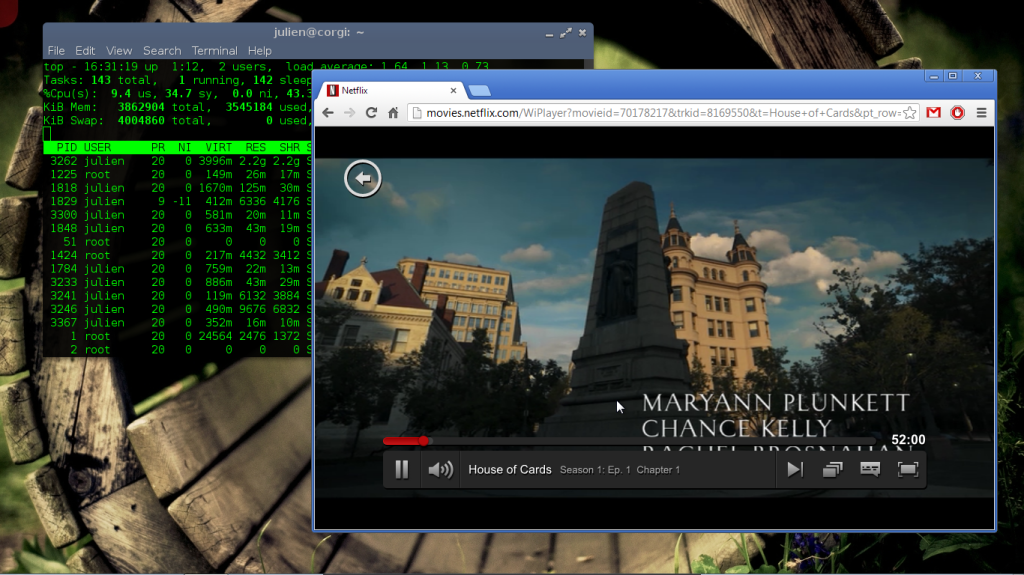 For the above screenshot, the left window is in Linux while the right one is in Windows. I get the best of both worlds running together thanks to VirtualBox’s seamless mode.
For the above screenshot, the left window is in Linux while the right one is in Windows. I get the best of both worlds running together thanks to VirtualBox’s seamless mode.
The laptop itself is great. It has a low-power Intel Core i3-2365, 4GB of RAM, and 500GB hard drive space. It also has 802.11n dual-band wifi, gigabit ethernet, a multi-finger touchpad, USB 3.0, and VGA+HDMI out. The machine is small with its 11.6″ screen, and so quite light.
The included processor is powerful enough to run Netflix on Windows smoothly, yet energy efficient enough to have the whole system be relatively cool to the touch. It isn’t anywhere near as powerful as a top-end mobile processor, but that’s irrelevant since it fully meets my needs. I also don’t need the thin profile or other luxuries afforded by today’s ultrabooks.
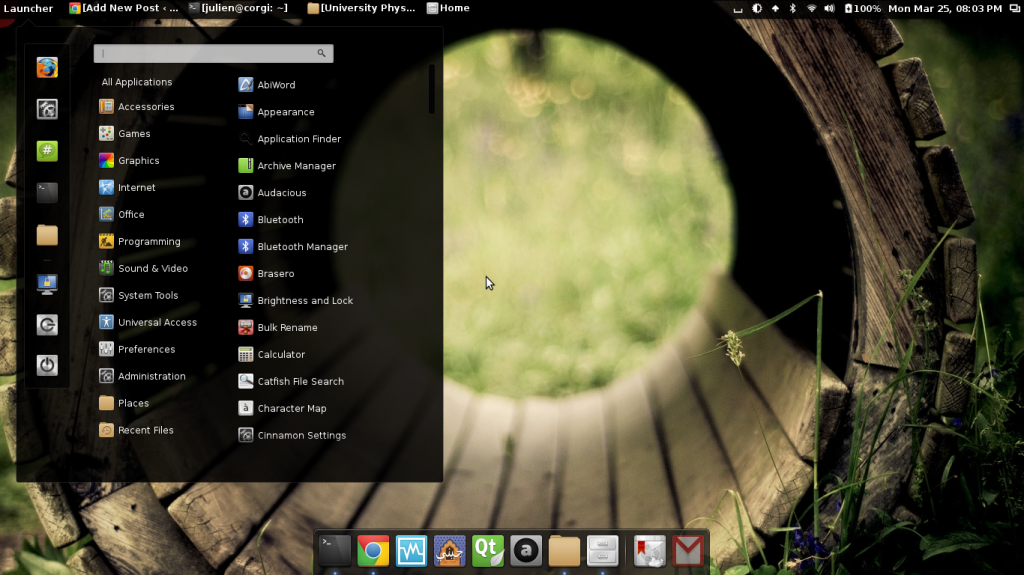 Going back to Windows 8, it’s a pretty solid operating system. But it isn’t at all suitable for laptops and computers lacking a touch screen. It’s designed to keep things far apart to make it more usable with a finger – which is the opposite of what’s ideal for those controlling a mouse pointer.
Going back to Windows 8, it’s a pretty solid operating system. But it isn’t at all suitable for laptops and computers lacking a touch screen. It’s designed to keep things far apart to make it more usable with a finger – which is the opposite of what’s ideal for those controlling a mouse pointer.
Furthermore, Windows 8 is very much of the smartphone design philosophy: few options and intuitive. That means that most of the stuff I like to do with a laptop, which involves exerting granularity, are not available outright. You need to take extra steps and jump design paradigms. This is great for my parents and those who want a computer that’s easier to use, but not so ideal for myself.
I think what you’ll see are most applications migrating to this new iPhone-esque design philosophy. I can’t imagine how more applications that need all those options will shed their apparent complexity to make the jump, but that’s more a lack of imagination on my behalf. I’m sure most people thought the same when the transition from command-line to graphical interfaces was happening during the eighties.
